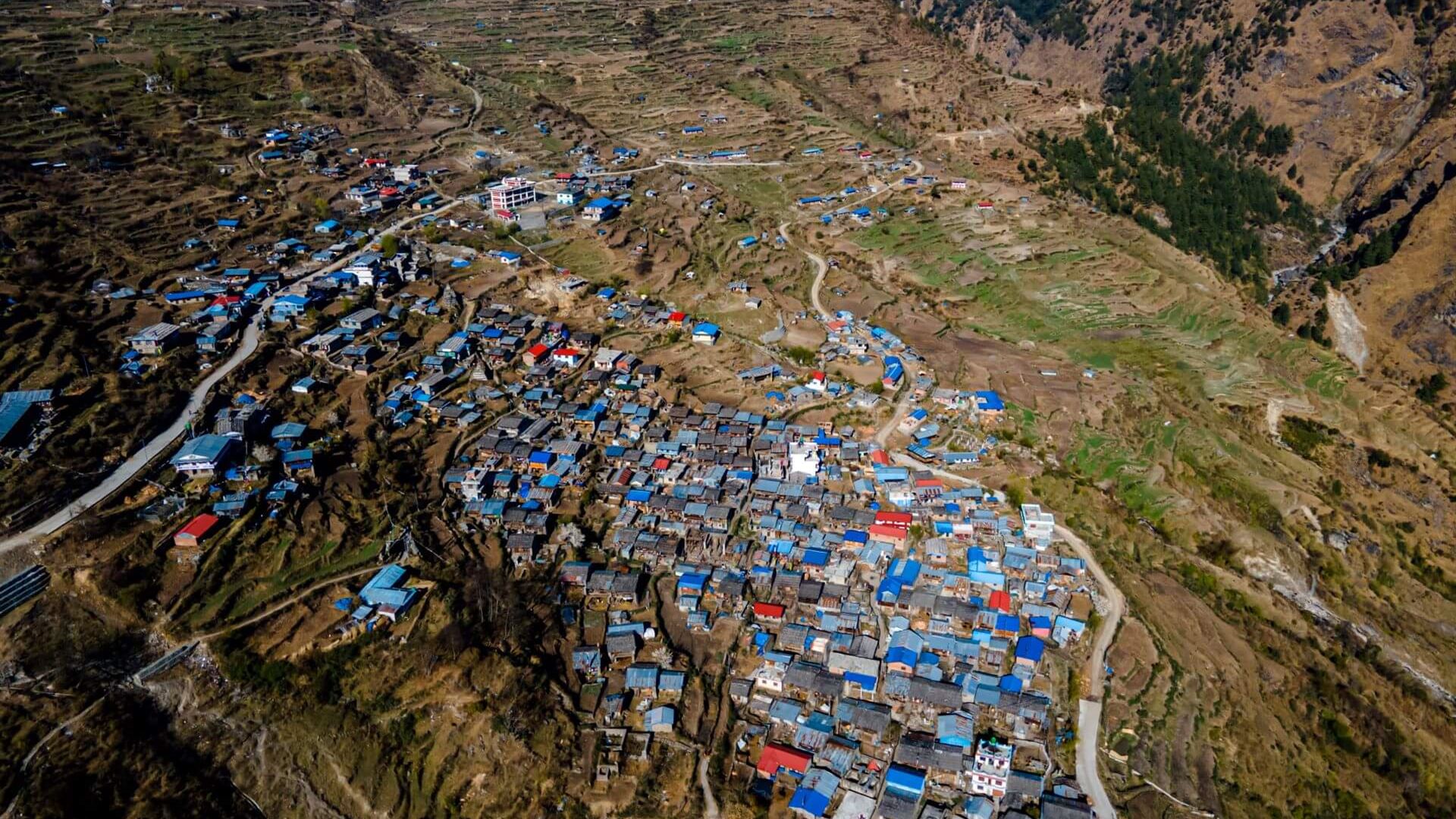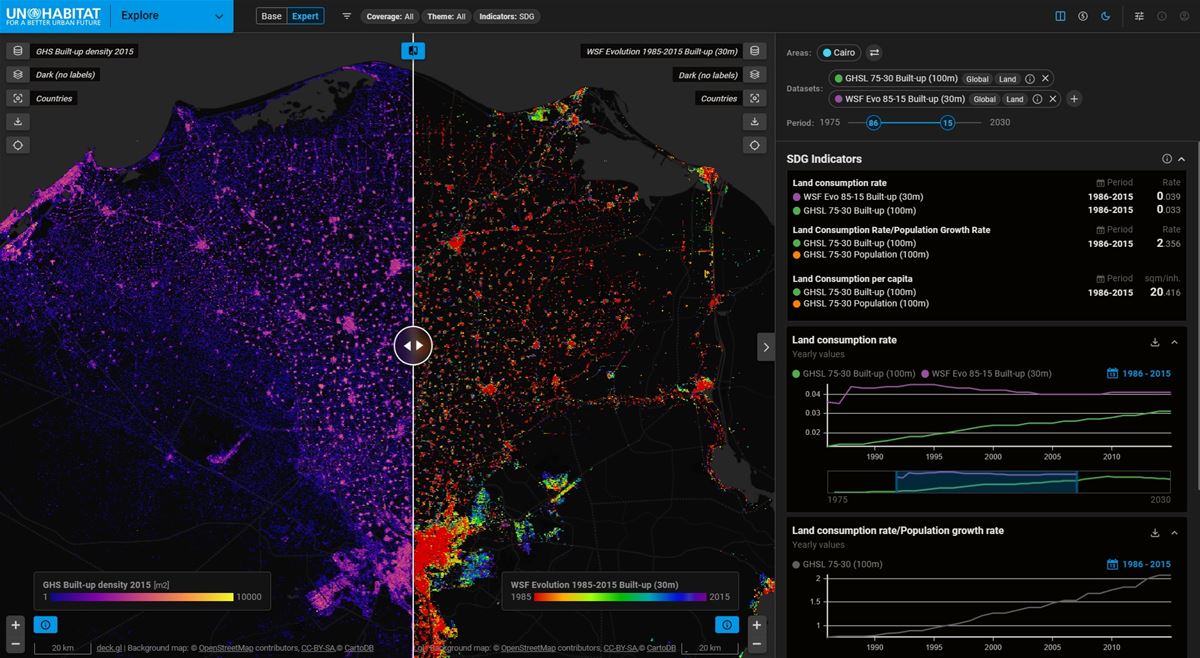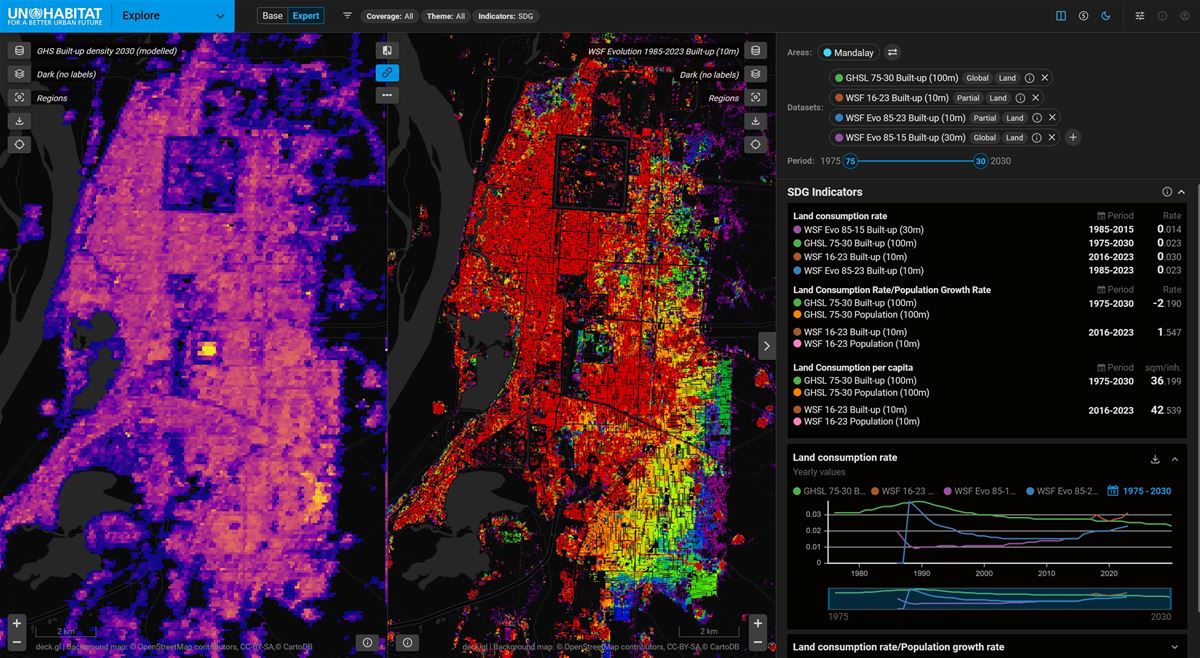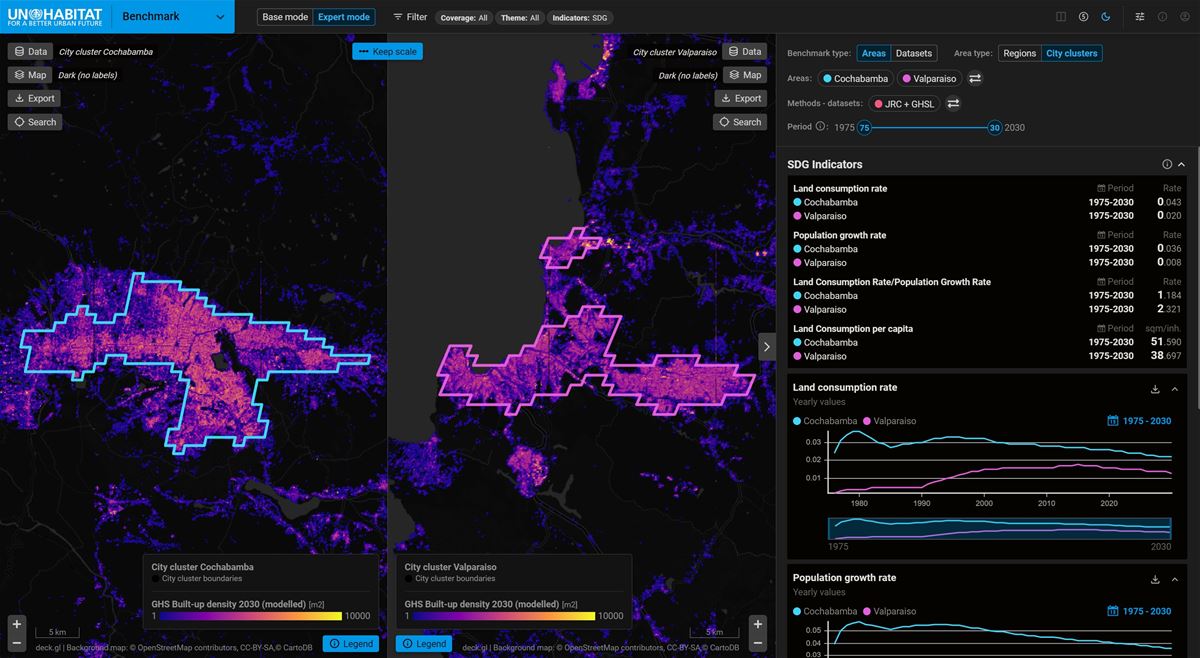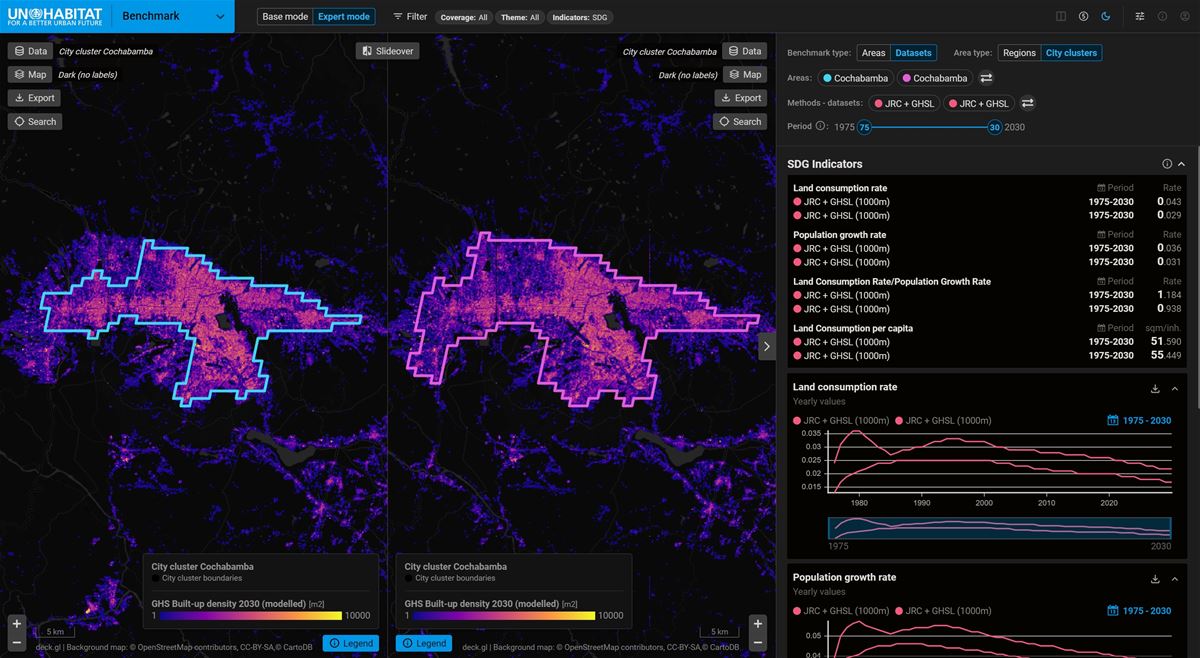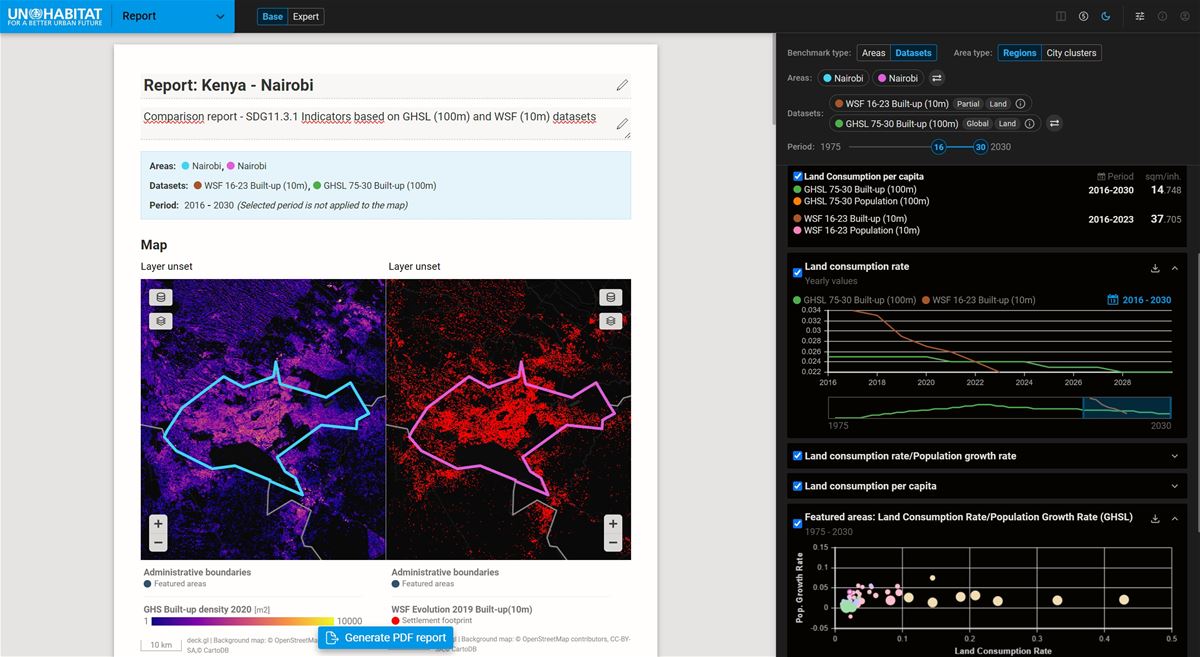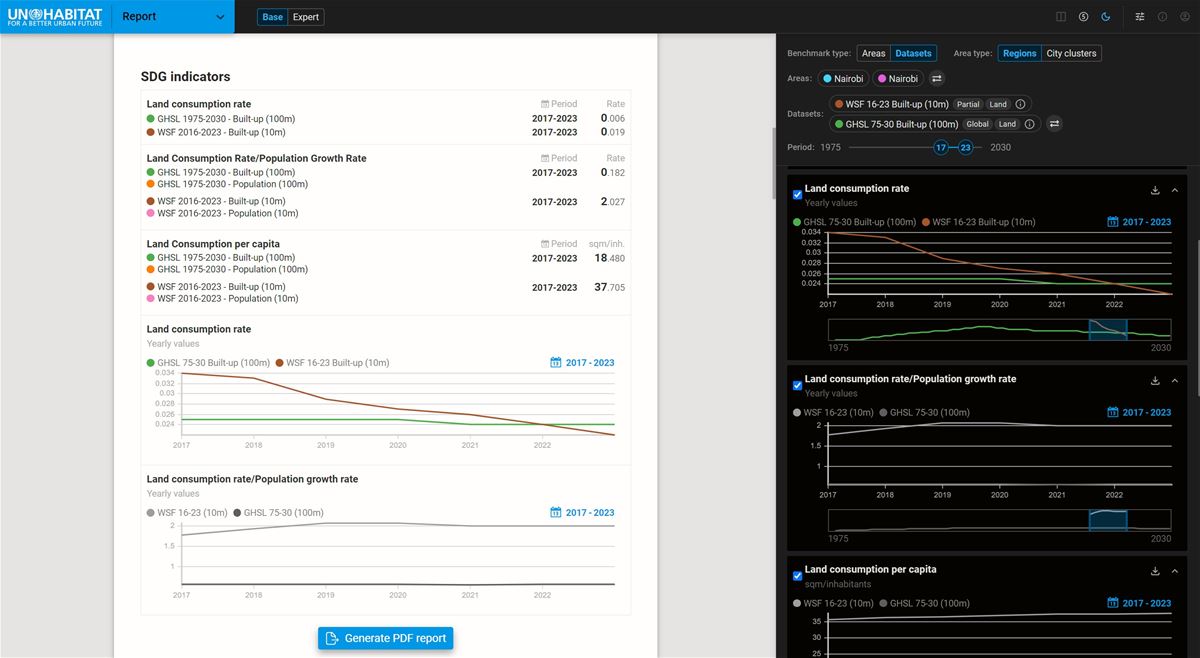Situation
Sustainable urbanization presents both a global challenge and an opportunity.
While Earth Observation (EO) technology offers impressive capabilities to deliver high-quality, spatio-temporally rich, harmonized, and fit-for-purpose data essential for understanding the built environment and long-term urban development, its full adoption for operational activities is often hindered. The process of creating, handling, and exploring vast global datasets on built-up areas, defining analytical units, and generating standard indicators can be tedious and complex, complicating or even preventing the practical uptake of EO potential. There is a critical need for quality, harmonized, and relevant data to effectively navigate urbanization processes for the benefit of all.
This initiative was motivated by aim to leverage opportunities presented by existing technologies, such as UrbanTEP (including VISAT and EuroDataCube), and a new generation of global urban datasets, like Global Human Settlement Layer (JRC) and specifically the World Settlement Footprint (WSF) suite, to address these obstacles and improve the situation with dedicated analytical web application. The cooperation was funded by ESA Earthnet, supporting collaboration with UN-Habitat on Sustainable Development Goal (SDG) 11 ("Sustainable cities and communities") and the New Urban Agenda (NUA).
